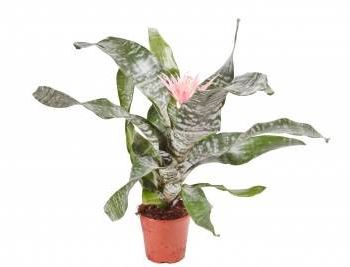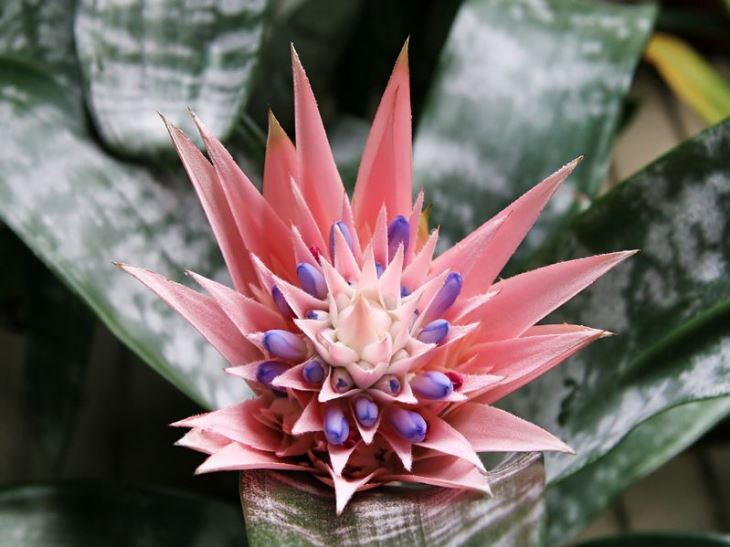





The urn plant also has the common name of silver vase and is the most popular bromeliad from the Aechmea genus for growing and displaying indoors. The common names derive from the center of the plant being shaped like an urn or vase. This vase shape collects water in its natural habitat and the grower fills this frequently as intended by nature. This plant produces a large flower head after a couple of years of growth, and when it does, it can last from mid-summer until early-winter.
How it looks: Being a typical bromeliad, the Aechmea genus has wide arching strap type leaves which are leathery. The A.fasciata's (this species) are kind of powdered looking, that are silver and green color. The foliage can also be variegated. While the foliage has great displaying potential indoors, the flower head stands out even more "with it's eye catching looks". The spiky star shaped flower head (pink in color), above the foliage - grows to approximatively 6 inches long, with small violet flowers growing from the bracts. The exotic looking urn plant impresses new viewers.
Once the flower has bloomed: Once the flower has bloomed from summer until winter the unfortunate aspect of growing these (like other bromeliads) is the leaves begin to die. However, they will produce offsets (pups) at the base section which can be propagated, after they have grew five inches, or more.
Poisonous for pets: I’m not aware of reports about this plant being toxic to pets.
Ease-of-growing: The silver vase plant is fairly easy to grow. The main requirements is enough bright light, filling the vase with water, and quite high temperatures. More about caring below.....


Brown leaf tips: Dry air from lack of humidity could be the cause of leaf tips turning brown and dry,w which can be improved with misting or using a humidity tray. Also, check if the vase has been filled with water regularly and enough.
Brown leaf patches: Brown leaf patches may be caused by too much direct sunlight. Move the plant into a shaded spot from the sun and remove severely damaged leaves.
Plant dies: If the plant has not bloomed yet and its not going through the normal cycle of creating offsets and dying then the most likely cause was over watering.
Insects: Mealy bug and scale can be a problem.
Plant tips over easily: These plants tend to be quite top heavy which can make them topple easy. Rather than use a plastic container, it's best suited to ceramic or other heavier types.
Copyright © www.100flowers.win Botanic Garden All Rights Reserved